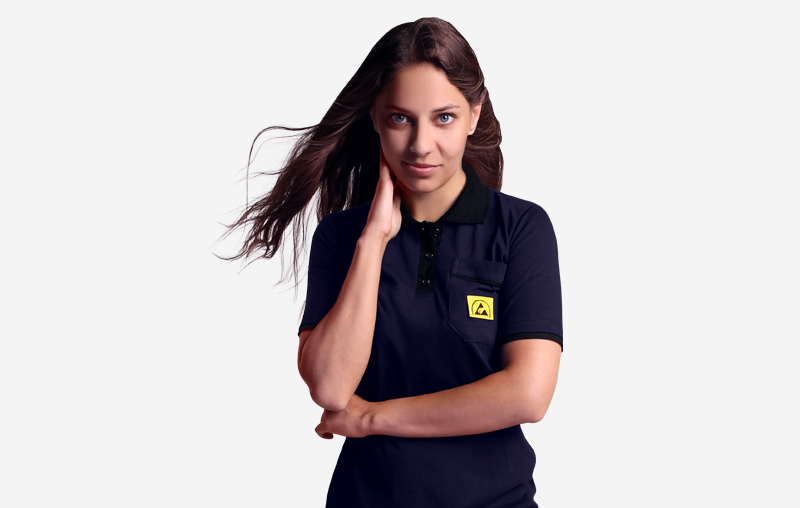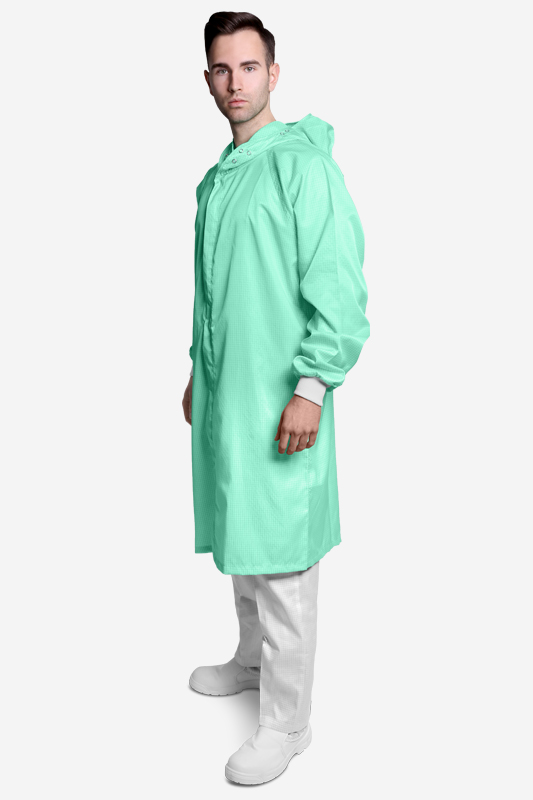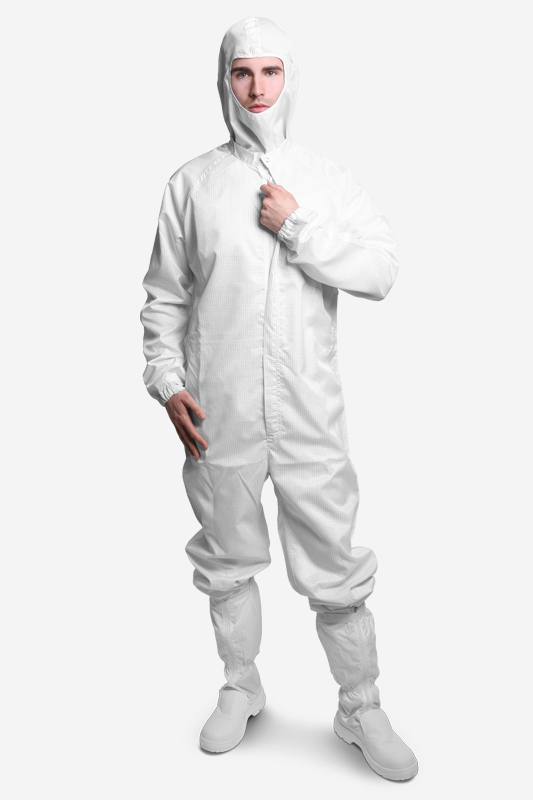Although companies manufacturing or servicing electronic devices have protective procedures in place to prevent ESD, many of them still have problems with damage to sensitive components. How is it possible that, despite the safeguards and procedures in place to ensure that the right clothes are worn, companies are still struggling with ESD?
Very often the causes of problems are mundane, such as poor quality protective clothing, its inadequate selection and handling. Even highly trained ESD coordinators, whose job it is to raise workers‘ awareness of the safety of work in the electronics industry, are no guarantee of full protection when mistakes are made with the basics. The values of potentials at the workplace range from several hundred to even several thousand volts. To generate an electrical impulse of 1.5 kV it is enough to rise from the chair and such an impulse may cause significant damage not only to the assembled components, but also to improperly protected measuring equipment or other devices present within the workstation.
The problem is also the limited ability to detect and eliminate components damaged by ESD, as symptoms of failure often remain hidden for a long time. In the worst case, they will appear after the product is sold and have a negative impact on the company’s image, the quality of its products and cause additional costs related to their transport and service. That is why protective clothing, thanks to which a production worker can be permanently earthed, is so important for the safety of electronics production.
QUALITY
The need to wear appropriate antistatic protective clothing seems to be indisputable and this should be the starting point for everyday work. Currently, in the electronics industry, it is difficult to find a company that does not maintain safety standards in this area, because aware employers cannot afford to suffer losses due to obvious negligence. Unfortunately, despite the good intentions and the supply of antistatic clothes by the people assigned to it, it very often turns out that these clothes do not fulfill their role.
Threads that protrude from seams, a badly made antistatic fabric that loses its properties after several washings can become a threat to product quality. There are many cases where faulty clothing has wasted the effects of months of research and even led to a dangerous final product.
That is why it is so important that the clothing supplier is reliable and that the clothing is tested and meets the relevant standards. The key here is to have a certificate attesting to the suitability of such clothes for use in EPA zones, certified with the CE safety mark. To obtain the relevant document clothing manufacturers must demonstrate compliance with a number of industry standards and guidelines.
Just as important as the choice of the manufacturer of antistatic clothing is the way it is serviced (washing, maintenance). Unfortunately, antistatic clothes should not be washed in uncontrolled conditions or even in non-specialized laundries, because they quickly lose their antistatic properties. Washing is only possible in sterile, specialised laundries with adequate cleanliness. A reliable and trustworthy supplier of antistatic protective clothing should ensure that the clothing is properly serviced.
PROPER SELECTION OF CLOTHING
The ESD coordinator or the person responsible for equipping staff with antistatic protective clothing faces a challenge nowadays. A wide range of clothes designed to work in EPA zones does not make the task any easier and the quality is often difficult to determine on the basis of supplied patterns or catalogue cards.
The supplier or manufacturer of protective clothing should provide technical advice and assistance in the selection and should be able to demonstrate that the clothing it supplies is tested and examined by authorities or institutes specifically established for that purpose. Undoubtedly, the selection of specialty clothing should be guided by the often mentioned quality of protective measures, their compliance with standards and, not forgetting the workers themselves, by the comfort of using them. Depending on the scope of work, the selection of clothing must take into account at least a few basic factors: ensuring work safety and protection of employees, meeting legal and general company standards, taking into account specific working conditions, quality and production reliability.
Especially for highly specialised clothing, e.g. for Cleanroom, where the clothing is one of the critical conditions for process efficiency and safety requirements. Therefore, in practice, very often the definition of standards is carried out together with the clothing supplier. When equipping people working in the EPA zone, it is worth thinking about choosing a complete set of clothing, which is a standard set: underwear, shoes, trousers, shirt and outerwear, such as an jacket or a jumper.
CLOTHING PERSONALISATION
Many electronics manufacturers and service companies identify their employees in the various departments of the company with clothing, so the manufacturer’s capabilities in marking protective clothing are also important. That is why leading manufacturers of high quality protective clothing offer additional services, which include the possibility of personalizing the clothing: embroidering the company’s logo or creating a suit of colour or pattern. For the Reeco brand, there are even patches or embroideries with your name, surname and position.
SUMMER CLOTHING
Undoubtedly, summer clothing complements each operator’s clothing set. Special attention should be paid to the material from which such clothing was made.
Summer clothing must also be made in accordance with the standards, from appropriate, tested and certified material, for example by the Textile Institute. Reeco Polo shirts are sewn from a Pika fabric consisting of 99% cotton. T-shirts are made from a mixture of cotton and polyester called elanobotton.
Both types of material provide high durability and are very breathable. This contributes to greater operator comfort during warm periods.
FURTHER EQUIPMENT
The elements required at a workstation where the operator comes into contact with sensitive electronics include antistatic ties with a ground connection cable and antistatic mats, including floor anti-fatigue mats.
However, the most important element is the table and furniture in the environment. This cannot be furniture that does not meet the relevant requirements and standards. Therefore, Reeco also offers complete modular furniture sets such as tables, trolleys, cabinets, shelves and ESD chairs.
By choosing complete solutions for the Reeco brand, ESD coordinators and thus employers are guaranteed products of the highest quality, made from materials with the required certificates and approvals, in accordance with international standards.
DOWNLOAD PDF (IN POLISH)


